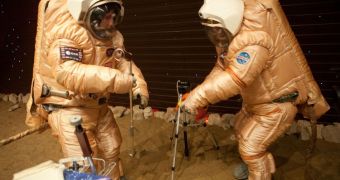When scientists managing the Hawaii Space Exploration Analogue & Simulation (HI-SEAS) experiment put out a call for participants in a four-month bogus space missions, they did not expect to receive more than 700 applications
Researchers want to simulate the conditions aboard a spacecraft for 120 days, in a bid to determine how future astronauts will react when sharing quarters with each other for prolonged periods of time.
Hi-SEAS researchers need six volunteers and two back-up participants for the project. The selected six will be locked in a chamber simulating the interior of a spacecraft on its way to Mars. The project was prompted by the space policy the White House proposed last year.
At that time, US President Barack Obama asked NASA to put astronauts on a near-Earth asteroid by 2025, and on the surface of the Red Planet by 2035. The American space agency is currently dedicating its resources to fulfilling this vision.
While the technical aspects of this challenge can be overcome through ingenious engineering, the human aspect is a bit more complex. A mission to Mars (using currently-available technologies) would take at least 7 to 8 months to reach the Red Planet, and just about the same time to return.
This puts astronauts in a position where they have to live with each other in confined quarters for long periods of time. The psychological effects of such a situation need to be studied in detail, hence the need for experiments such as HI-SEAS, or the recently-concluded Mars500.
Volunteers interested in taking part in this study were asked to submit their applications by February 29. “I'm thrilled and hugely gratified by the response,” project co-leader and University of Hawaii in Manoa expert, Kim Binsted, tells Space.
Primarily, the purpose of HI-SEAS is to figure out how limited dietary choices, coupled with the unavailability of fresh food, will influence astronauts during long space missions. The basis of participants' daily food will be prepackaged meals.
They will also cook their own food from ingredients that are non-perishable. The test subjects will fill out logs every day, detailing their food intake, the food they like or dislike, how healthy they feel, and the general mood they're in.
Each participant will receive $5,000 upon completion of the simulation. Their travel and expenses will also be covered by the research team. “The selection committee will choose about 30 semi-finalists," Binsted explains.
“The semi-finalists will be asked for references, and to get a class 2 flight medical. We will then conduct phone interviews, and select the eight finalists,” she concludes.

 14 DAY TRIAL //
14 DAY TRIAL //